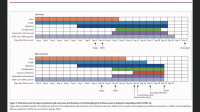ecstatichamster
Member
- Joined
- Nov 21, 2015
- Messages
- 10,504
I am experiencing some chest tightness. Bag breathing or Frolov device or pauses always helps.
The worst thing I could do was get oxygen or be “ventilated”. I don’t need any of that, my point is that would kill me and probably accounts for most of the so-called COVID-19 deaths.
The worst thing I could do was get oxygen or be “ventilated”. I don’t need any of that, my point is that would kill me and probably accounts for most of the so-called COVID-19 deaths.

